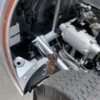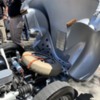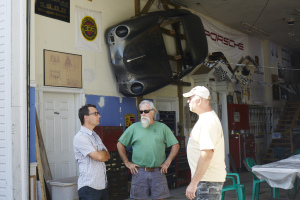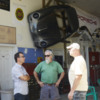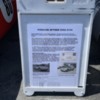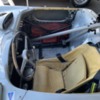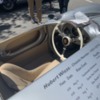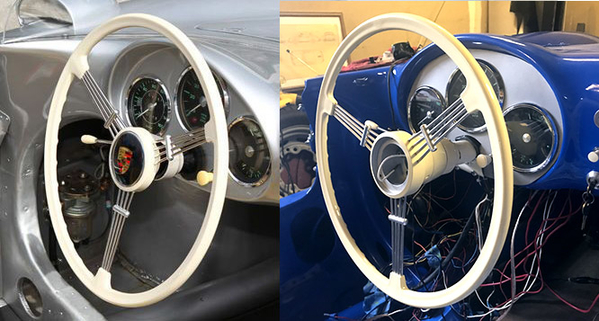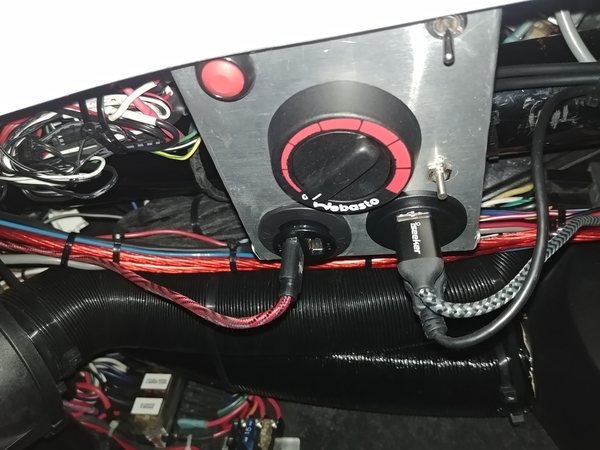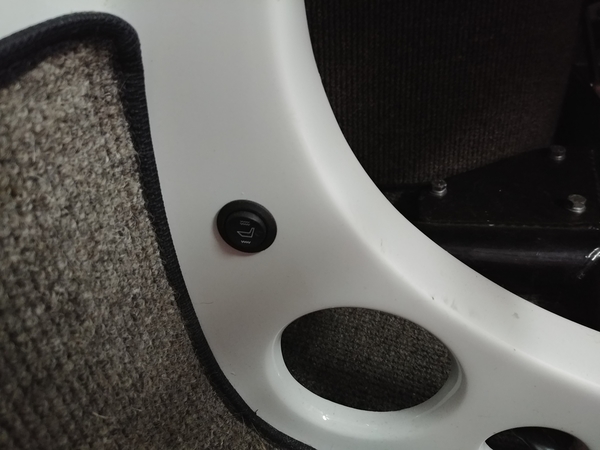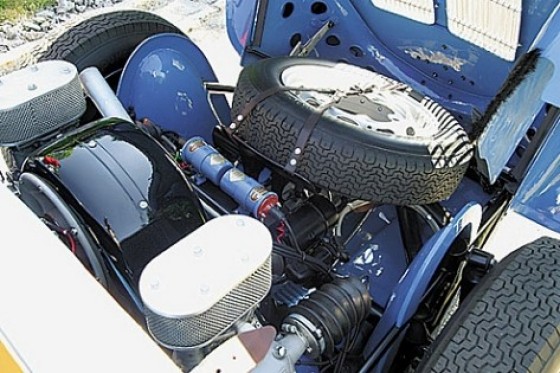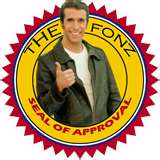Weekend update:
Added a rear exhaust mount and test-fit some cardboard for the underpan back there. With the mufflers inboard like this it will have to be a little different than stock, but it should work.
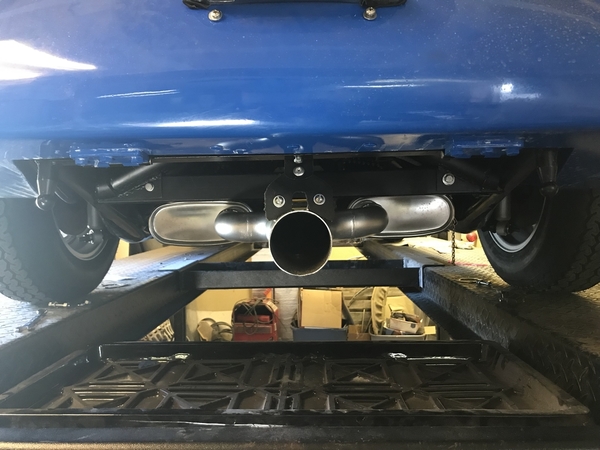
Installed Gordon's 5-Cent Racing fuel gauge calmer-downer thingie (thanks again, @Gordon Nichols) and tested my sender with the gauge.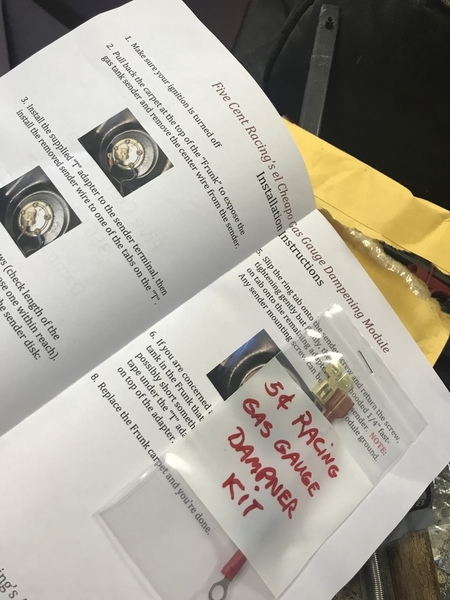
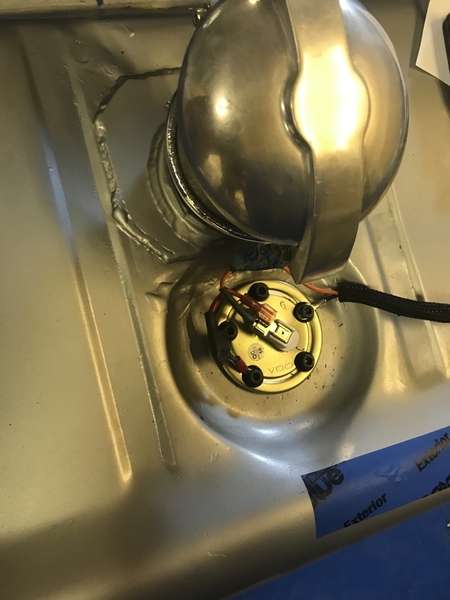
Bent the sender arm a bit and, using a bit of wire to manipulate it in situ (thanks @Alan Merklin) got it so it shows empty just right but with the tank full it reads just under full. I may bend it just a little more to make it read full on full and empty just a little before it's really empty.
The calmer-downer thing did not noticeably affect the swiftness of the needle's movement but I chalk that up to the kind of jerky way the sender gets moved on this test.
Did a little more welding on my beam gussets and painted the bare metal black. This photo obscures the truly atrocious spatter and blobs I made with the welder, and I'm totally OK with that.

Finished alignment today and to my surprise and joy, I was not obligated to drill or saw on the torsion arm holes. Toe in front is 1/8 inch, rear about 3/16, front camber about 1/3-1/2 degree negative on both sides, rear camber is about -1. Here's the toe measurements I got before checking the overall front-to-rear squareness.
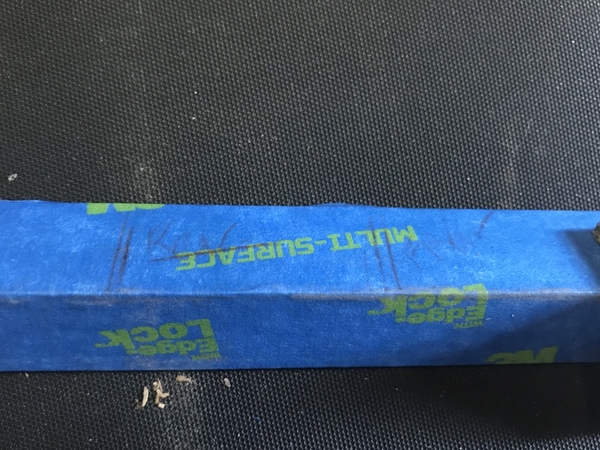
Yesterday I wasn't sure how I would do it. Today I rummaged around the scrap pile and found an old bed frame. Set one side across the lift, snug up to the front of the front wheels. The other went behind the rear wheels....

The initial measurements were not encouraging: Almost half an inch longer on the driver's side.
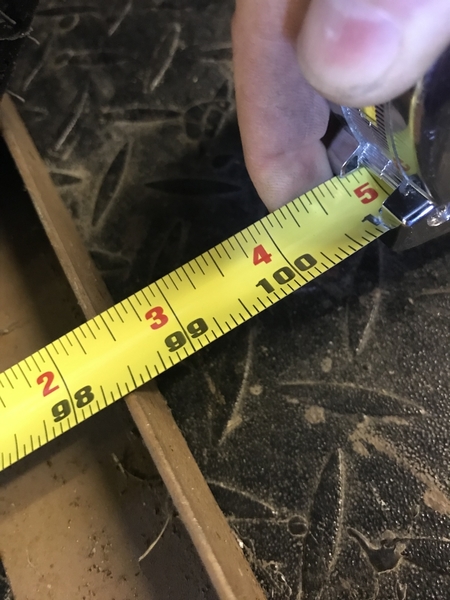
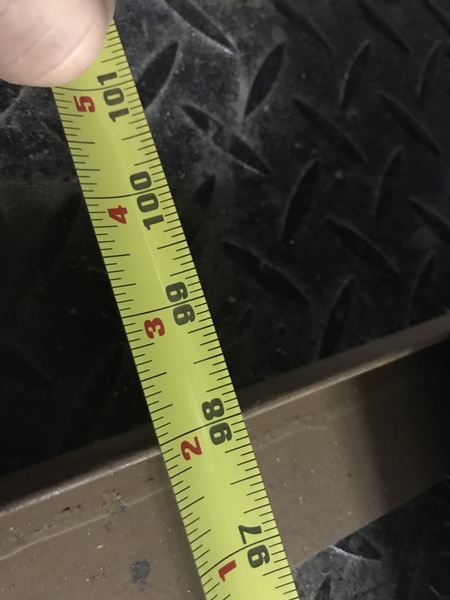
The left rear wheel was already kind of tight forward in the wheel well, and some earlier toe-in measurements had left me with the impression that I was going to be out of adjustment before I got it in spec. But it turns out the slots are long enough.
Right side back 3/8 or so...

Left side forward a bit less than that:
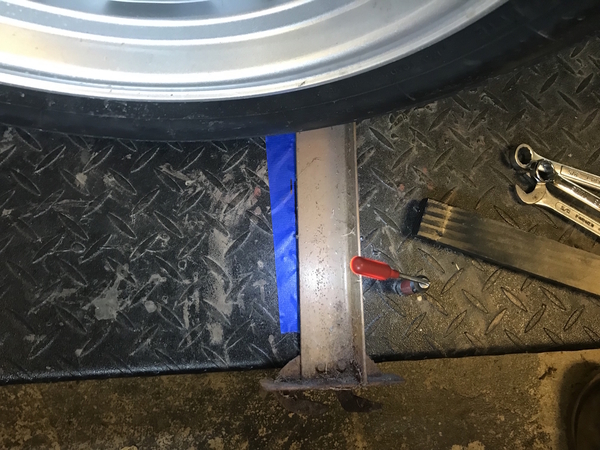
Check toe again...
 And...
And...


Front/rear wheel base length is maybe 1/16-inch off side to side, slightly longer on the right which maybe is good because it should bias the car to a slight left turn to counteract road crown(?).
Rear ride height is a hair more than 5.5 inches and front is about 5.65; 60 lbs fuel in front and the spare in back should bring it very close to even at 5.5 inches all around when underway.
Alignment done, I returned to the hydraulics.
Passenger front caliper may be leaking. Wiped away some and pumped the pedal, will check later for wetness. The clutch still doesn't work & I'm almost out of adjustment on the slave cylinder. No air on the bleed. I'll dig into it again tomorrow but curious to hear from fellow Spyder people running the CNC hydraulics.



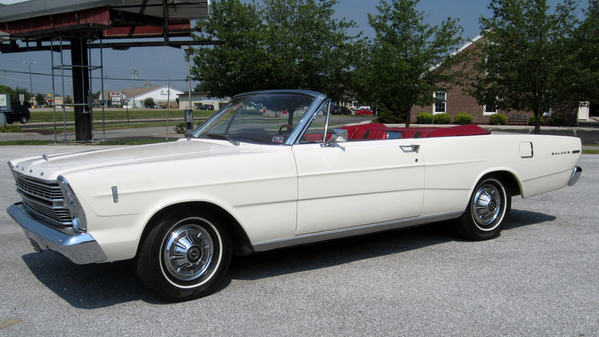
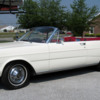
 Caboose"
Caboose"


